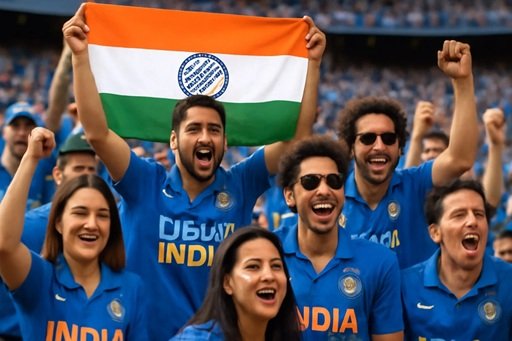Cricket in India has always been emotional — cheering, shouting, celebrating, debating, hoping. But in recent years, the sport has gained a new layer: data. Fans are no longer satisfied with only watching matches; they want to understand them. From strike rates and economy numbers to wagon wheels and win probability charts, statistics have become part of everyday cricket conversations.
This shift has created a more analytical generation of fans. They read matches differently, react differently, and elevate discussions with insights that once only commentators used. Let’s explore how this “data-first mindset” shapes the modern cricket experience in India.
When fans become analysts
A large number of fans now watch cricket like analysts. The moment a batter hits a boundary or a bowler picks a wicket, they immediately check related numbers:
- current run rate
- required run rate
- dot-ball percentage
- player vs bowler matchup
- total boundaries vs singles
- partnership contributions
These insights give viewers a richer understanding of what’s happening on the field.
Data makes matches more exciting
Statistics add new ways to enjoy the game. Instead of just waiting for big shots or wickets, fans track micro-moments that influence matches.
Exciting data-driven moments include:
- a bowler finishing an economical over
- a batter reaching a milestone strike rate
- a fielder maintaining a high catch efficiency
- a team improving its powerplay record
- a partnership stabilizing a chase
These details turn every over into a story with measurable progress.
Young fans love data for learning the game
For many school and college students who play cricket in their neighborhoods, statistics are more than trivia — they are learning tools.
Young players use data to:
- study ideal strike rates for their batting order
- understand bowling variations
- compare their style with professional players
- evaluate how pitch conditions influence stats
- watch analytical videos to improve technique
Data sharpens their natural instincts and helps them evolve as players.
A new kind of match-day conversation
Walk into any living room, tea stall, hostel mess, or office break room during a match, and you’ll hear data-filled conversations:
- “He should rotate more; his dot-ball percentage is too high.”
- “This bowler always does well in the middle overs.”
- “They need 9 an over — very chaseable if the next two overs go well.”
- “This ground’s average first-innings score is 165.”
This analytical culture connects fans, even if they support different teams.
Digital tools fueling the shift
Stats-focused platforms, short videos, and analysis pages have made data fun and accessible. With just a few taps, fans can check:
- live scorecards
- ball-by-ball insights
- comparison charts
- pitch maps
- over-by-over projections
- historical performance graphs
Fans also build personal digital routines with bookmarks and frequently visited pages. These often include a mix of sports stats, analysis blogs, and general-use links. Depending on browsing habits, some users include platforms such as Lucky Star among their go-to links alongside cricket stat pages.
How commentary has evolved
Even cricket commentary has adapted to the statistical revolution. Analysts now explain:
- match-up advantages
- powerplay strategies
- death-overs probabilities
- field placement efficiency
- strike-rate trends by phase
Fans who grew up listening to emotional commentary now expect a mix of excitement and deep analysis.
Fantasy leagues have boosted data interest
Fantasy-cricket culture has made fans even more curious about numbers. To build strong teams, players dive into:
- recent form charts
- averages across venues
- head-to-head records
- batting position influence
- economy rates against specific teams
- performance in day vs night matches
This transforms the fan experience from passive watching to active participation.
Social media and quick statistical culture
Short clips, reels, and infographics have made stats easier to digest. Within seconds, fans can see:
- top performers
- fastest fifties
- most sixes
- highest partnerships
- best spells of the season
These formats keep the statistical conversation active even when no match is on.
Kids and the numbers game
Children who follow cricket now learn math and logic through sports. They calculate:
- net run rates
- strike-rate differences
- run-chase requirements
- wicket probabilities
- overs remaining vs runs needed
This playful exposure to math makes learning more engaging.
Beyond numbers: the story behind stats
Cricket statistics are powerful because they add context. Fans understand:
- why a bowler’s economy rate matters more on slow pitches
- how a batter’s strike rate changes based on the situation
- when a team’s win probability actually reflects momentum
- why some players perform better under pressure
Stats don’t replace emotion — they enhance it.
Final thoughts
The rise of cricket statistics has created a smarter, more curious, and more analytical fan base in India. Data helps people appreciate the tactical depth of the sport, understand player roles more clearly, and enjoy matches in a richer way. Whether checking match-ups during a chase or analyzing economy rates after a spell, numbers have become an essential part of India’s cricket culture.
Whenever you’re ready, send the next parameters — I’ll keep the fresh structure going.



